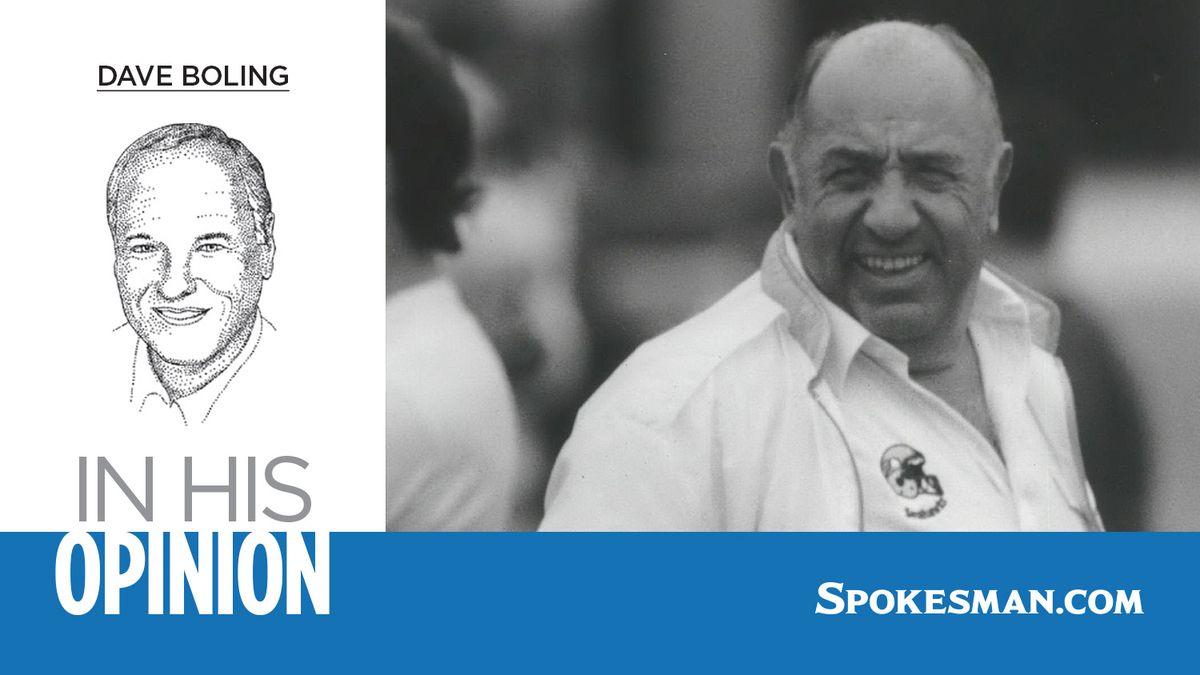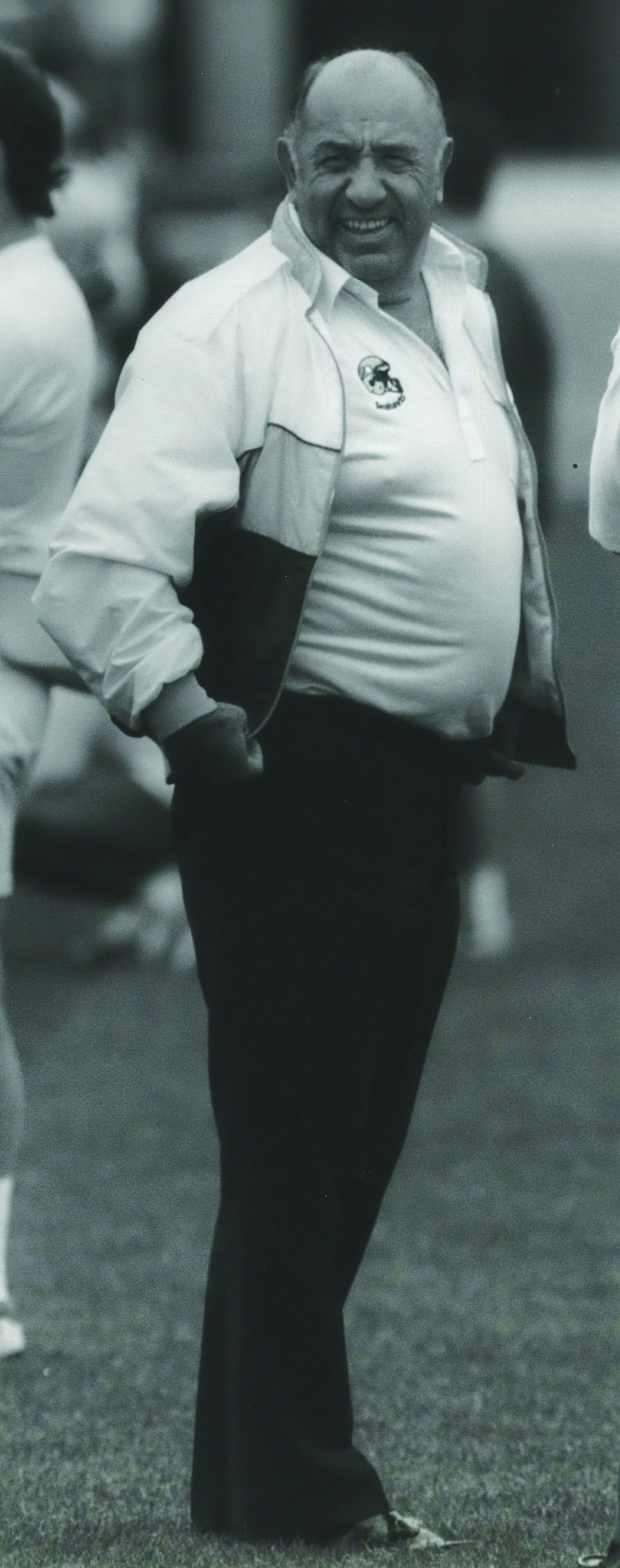Dave Boling: The Seahawks under Ken Behring are a painful reminder that good ownership can be the difference between a Brett Favre and a Dan McGwire
Content warning: This column may trigger nightmare flashbacks for some older Seahawks fans.
But younger fans, accustomed to competitive teams and competent management under the quarter-century of Paul Allen ownership, should be reminded that it hasn’t always been that way.
For a time, a dark force had taken control, creating an era of defeat and decline.
Why bring it up now, after 25 years of stability? Although it may not be imminent, the Seahawks eventually will be sold by the Paul G. Allen Trust, trustee Jody Allen has confirmed.
Also, it’s been exactly 35 years ago this week that the Nordstrom group, the original owners, sold the team to California businessman Ken Behring.
And the entire dismal span of Behring’s reign should serve as a cautionary example of how a bad owner can wreck a team and alienate a rabid fan base.
The Nordstrom family, headed by managing general partner John Nordstrom, at the end of August 1988, accepted $80 million from Behring.
When Behring took over, season tickets were not only sold out, but the waiting list had famously reached 30,000. When Behring finally sold the team to Allen, the wait-list had evaporated and the Hawks were having trouble drawing 40,000 to games inside the Kingdome.
The team was 20 games under .500 during his ownership, and his 1996 attempt to abduct the team to California made Behring a pariah to football fans in the Pacific Northwest.
John Nordstrom shared your pain.
“The years of Ken Behring’s ownership were really, really difficult,” Nordstrom said. “I felt so bad for the fans to see someone manage the team so badly. (Behring) just had no clue, and I had to bite my lip watching what was going on.”
A few years ago, Nordstrom invited me to “ghost” his autobiography, “Mr. John,” a non-commercial, self-published book. In the process, Nordstrom revealed the behind-the-scenes machinations of the sale and the attempted franchise move. Most of which made Behring look even worse than he already seemed in the public eye.
“Both of the NFL strikes (1982 and 1987) were really brutal for us as a family,” Nordstrom said, explaining that since the family retail business was a publicly traded company, there was concern about customer blowback from labor strife. Owners always look like the bad guys.
“The problems with the Kingdome were becoming apparent, and we knew a new stadium was needed. We took a family vote and, to be honest, I voted to keep the team.”
But the family voted to sell. Believing the NFL’s future was bright, John Nordstrom considered taking over full ownership at the time. “It would have meant risking everything.”
Prospective buyers included comedian Bill Cosby, and at least three big-money, heavy-hitting businessmen, but none offered the asking price of $80 million, and none would meet the primary Nordstrom mandate: “We were very clear on one point: We would not entertain any offer from anybody who was going to move the franchise.”
Behring made a full-price offer and promised Nordstrom to never move the team.
Employees felt an immediate culture shock when Behring took over.
“The Nordstroms were benevolent, hands-off owners who hired people and then let them do their jobs,” said a former team executive. “(Behring) walked in surrounded by an entourage of guys all wearing black, leather coats. They started doing a lot of stuff that wasn’t the Nordstrom way of doing business, not family-friendly, things like selling (premium) club seats that would displace long-time season-ticket holders.”
One of his first moves was to fire highly regarded general manager Mike McCormack. Behring’s choice for GM was Mike Blatt, a minority owner who later was allegedly involved in a murder-for-hire plot. He was tried twice, resulting in hung juries. His two alleged conspirators were found guilty and imprisoned.
Nordstrom confirmed the stories that in 1991 coach Chuck Knox was set on drafting Southern Mississippi quarterback Brett Favre, but Behring over-ruled Knox and forced them to use their first-round pick on Dan McGwire.
“After that draft was over, Chuck told me that it was the beginning of the end,” Nordstrom said. “He said, ‘Dan McGwire can’t play,’ and as we all saw, Brett Favre really could.”
The big lie came at the end, in early 1996, when Nordstrom heard rumors that Behring wanted to move the team to southern California. The team had improved from awful to middling, under coach Dennis Erickson, but the stadium’s problems became more pressing, with no public money for a rebuild in sight.
“I called (Behring) saying I needed to talk with him,” Nordstrom said. “He came over to my house. He sat in my living room and said, ‘I’m not going to move the team, wouldn’t do it’… but at that very moment, the moving vans were at the team headquarters in Kirkland.”
Some brass.
“I was absolutely furious. How could that so-and-so say that to me?” Nordstrom asked.
Nordstrom immediately called NFL commissioner Paul Tagliabue, whom Nordstrom said “went bananas.” Behring secretly had set up office and workout space in southern California. The trucks took off, and the Kirkland headquarters were shuttered.
Tagliabue threatened to fine Behring half a million dollars a day until they moved everything back to Seattle. Behring had no choice.
Microsoft billionaire Paul Allen began investigating the purchase of the team to save it for Seattle. He was skeptical; it was a mediocre team playing in an outdated arena with 10 years left on its lease, and an angry and disillusioned fan-base.
After gauging fan and public interest in keeping the team and partnering in a new stadium, Allen bought the Seahawks for $200 million. The result: The Seahawks have been to three Super Bowls and the franchise is now reputed to be valued at near $5 billion.
When his father took over the team, David Behring was installed as team president, and by most accounts was a likable person who was beyond his depth in upper management in the NFL. Recent attempts to reach him for this story were unsuccessful.
However, in 2006, David Behring told the Seattle Post-Intelligencer: “Well, it wasn’t one of my finest moments. I did not want to sell the team. But it wasn’t my decision. I enjoyed working with all the people in the NFL. I enjoyed working with the people of Seattle. I enjoyed working with the fans. Those are all very great memories.”
Not for the fans, not for Nordstrom.
Nordstrom said he wished he had bought the team himself. Brett Favre would have come to Seattle and who knows where things would have led.
“I really had no interest in a pile of money. I would have much rather had the football team,” he said. He also wished the NFL had done a better job of vetting Behring before the sale.
A sad story, certainly, but something to think about the next time the Seahawks need to find a new owner.

